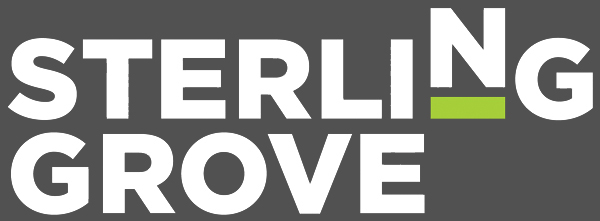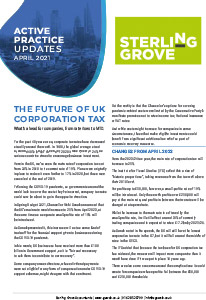Resource Hub
The Future of UK Corporation Tax
XXXXXPlanning ahead to boost your business’s resilience.
During what would normally be the busiest period of the year for businesses in retail, hospitality and other sectors, many will now be keeping a close eye on their cashflow as they deal with the impacts of COVID-19.
While Government-backed schemes like furlough, grants and loans will provide some much-needed support, there could be additional disruption to contend with as the UK reaches the end of its transition period with the EU and new rules take effect from 1 January 2021.
As a result of the pandemic, the Bank of England estimates that small companies in the UK could face a total cashflow deficit of £40 billion to £70bn this year.
The Bank’s research showed that small businesses are more likely than larger ones to operate in sectors that have been most affected by the impacts of COVID-19, such as accommodation and food, arts and recreation, and construction.
And while small businesses tend to hold a larger portion of their assets in cash than larger companies, which gives them more liquidity when it’s needed, their resilience to cashflow disruption is likely to be tested in the months to come.
Even before the pandemic, cashflow problems were among the main causes of business failure. The danger is they can be hard to spot if other financial measures, such as profit, are looking positive, and in many cases the signs aren’t obvious until it’s too late – at which point, you may struggle to pay your staff or bills.
To avoid running out of money and prepare yourself for financial shocks, it’s essential to monitor the way your business’s cashflow looks now, and forecast how it might look in the future.
MEASURING CASHFLOW
To create a useful forecast, the first thing you need is accurate data. Make sure you have a good record-keeping system for all of the cash that comes into your business or goes out of it.
Some examples of cash coming into your business include:
- your customers paying you for goods or services
- loans or overdrafts
- grants
- interest on savings and investments
- shareholder investments
- tax refunds.
Cash that goes out could include:
- the money you spend on stock, equipment or raw materials
- purchasing assets
- wages for your staff
- dividend payments
- rents
- daily operating expenses
- loan repayments
- tax
For each week or month that you’re monitoring, take away your net outgoings from your net income to reach a cashflow figure.
You can then keep a running total and look at how your cashflow changes over time.
Online accounting can automate your record-keeping by linking up with your bank accounts, invoicing systems and so on. Many software packages also give you the option to display that information in easy-to-read charts.
CREATING CASHFLOW FORECASTS
With your records to hand, you can start using that information to forecast your future cashflow.
This will be a combination of payments you already know are going to take place, such as bills, rent and wages, and informed estimates about the uncertain things, such as sales.
Depending on how established your business is and how much existing data you have, you might be able to create forecasts that look at the next few months, or a number of years.
It’s usually good practice to forecast about a year in advance, and keep coming back to tweak it as you gather more details.
Start creating your forecast by looking at your sales alone. For each product or service you sell, add up how much you expect to be paid, including VAT if your business is VAT-registered.
To figure this out, you can go back to your data on previous years, and look for any patterns or trends. This is where a good record-keeping system will come in handy. You could also base your assumptions on market research, and economic changes.
Remember to be realistic about when you usually receive payment, too, and allow for delays.
Once you’ve set out your predicted sales, your next step is to include any other sources of income, such as those set out in the bullet points above. Add up your sales and non-sales income totals to get your net income.
From there, list your predicted outgoings. You should be able to work these out based on past receipts and invoices, or the amounts you’re contracted to pay for services you use.
With this information, you can compare the money you’ve forecasted to come into your business with what’s expected to flow out, and see whether your cashflow is positive or negative.
Bear in mind that this is a very simple outline of what’s involved in creating a forecast, and there’ll be various other factors to consider when you make yours. Talk to us for advice on accurately forecasting your cashflow.
To cover for various possible outcomes, it’s a good idea to draw up multiple forecasts. You’ll usually need to look at three scenarios: the best case, the worst case and the most likely.
Even if the figures look bleak – especially when you put together your worst-case scenario – this will help you to make informed decisions about dealing with these challenges in your business.
HOW TO IMPROVE YOUR CASHFLOW
Generally speaking, improving your cashflow is about speeding up the movement of cash into your business, and slowing down the cash that goes out.
This will help you to create a positive cashflow, putting your business in a more stable position to handle any sudden financial impacts and keep up with its day-to-day costs.
Keep the cash coming in
For businesses that struggle to keep up a consistent inflow of cash, late payments are often the main offender.
In June this year, the Federation of Small Businesses, which regularly campaigns against late payment practices in the UK, reported that 62% of small businesses either saw late payments rise as a result of COVID-19, or had payments frozen completely.
Tightening up your invoicing processes can help. Make sure you set clear payment terms, send prompt invoices, and issue polite but firm reminders to customers with outstanding payments.
This is another job that technology can help with, by automating payment reminders and follow-up emails.
As always, communication is key – your customers may, understandably, be struggling to keep up with their payments, but talking to them and finding out what the problem is should help you to work out an arrangement that suits you both.
Reduce the cash going out
On a similar note, you might be able to negotiate favourable payment terms with your own suppliers to ease the pressure on your business. This is generally easier if you have an established relationship and a good track record of paying on time.
Another approach that many will have already taken this year is to cut down on your spending where possible.
Look for unnecessary costs, assess your stock levels, and check for any unused subscriptions to products or services.
Be careful not to reduce your spending too heavily, however, or you may risk damaging your ability to operate and maintain relationships, or your staff morale.
Finally, planning can make a big difference to your tax liability, so make sure you use any reliefs or allowances that apply to you.
This is something we can help you with, as well as keeping you up to date on Government support schemes and helping you to access any grants or loans you’re eligible for.
Contact us today to discuss how we can help you put together a road map that will keep your business on course for growth and success.

